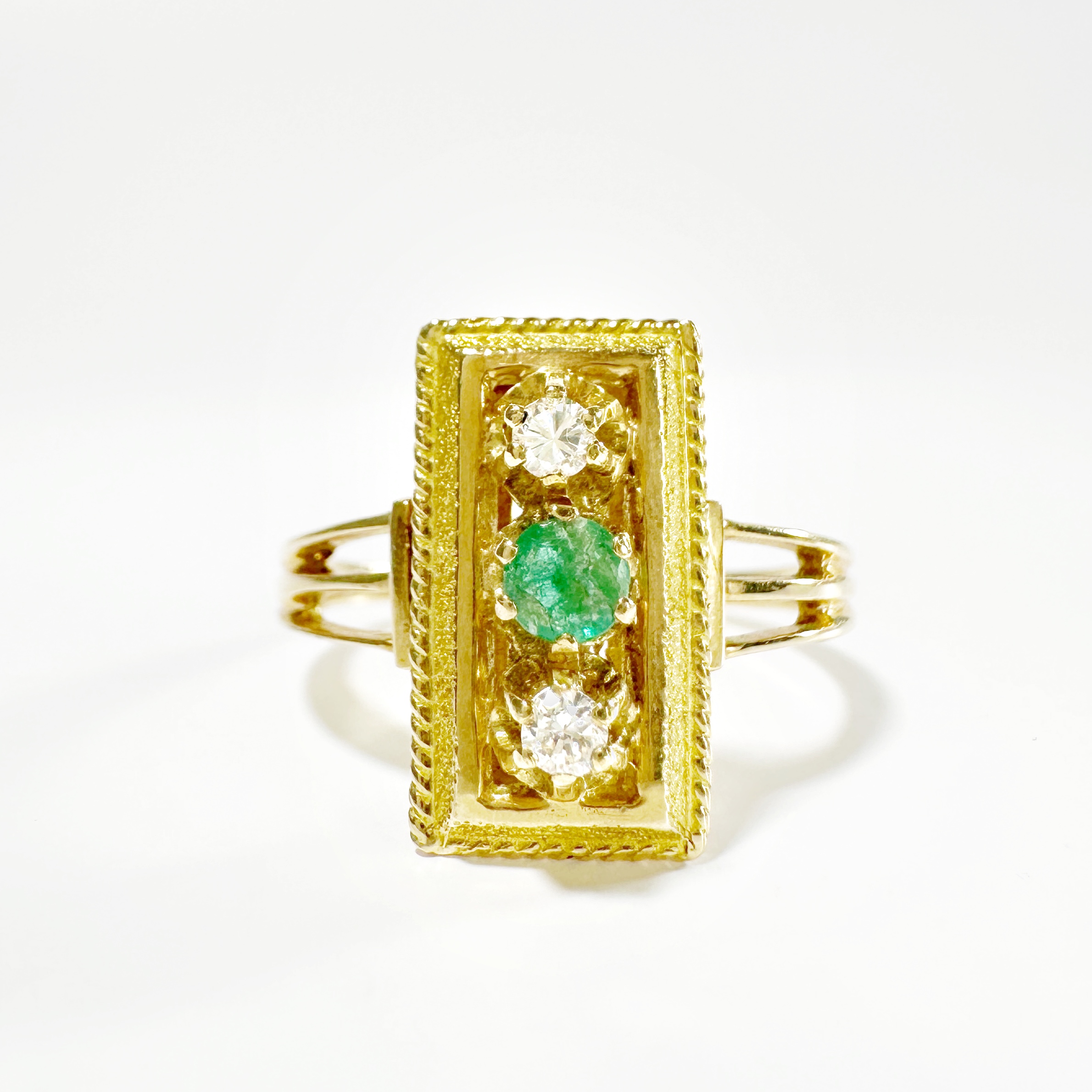Tanzanite‘s entry into the birthstone register only dates back to 2002. At ÓNÍSÌ PARIS, where we celebrate antique and vintage jewelry, jewelry featuring this stone is rare since its discovery only dates back to 1967. So we wanted to dedicate our first article on birthstones (or stone of the month) to this rare blue stone, a thousand times rarer than diamond.
 ORIGIN OF THE NAME TANZANITE
ORIGIN OF THE NAME TANZANITE
The name Tanzanite directly evokes Tanzania, and this is no coincidence. This blue gemstone with mysterious purple reflections is only found in northern Tanzania. It is near Mount Kilimanjaro, the highest point on the African continent, that the only tanzanite mines in the world are located. After being named blue zoisite in reference to its mineral group, it was renamed by the CEO of Tiffany with the much more evocative name we know it today.
HISTORY OF TANZANITE
 The discovery of this stone was late and is an accident because naturally, tanzanite is brown. It was discovered in 1967 by Maasai shepherds following massive thunderstorms on the Merelani Hills near Mount Kilimanjaro. The shepherds fled because of the bushfires caused by them. Upon their return, they were attracted by the sudden appearing of bright blue pebbles. The brown stones had turned into blue gems due to the high temperatures caused by lightning. This is how tanzanite was discovered.
The discovery of this stone was late and is an accident because naturally, tanzanite is brown. It was discovered in 1967 by Maasai shepherds following massive thunderstorms on the Merelani Hills near Mount Kilimanjaro. The shepherds fled because of the bushfires caused by them. Upon their return, they were attracted by the sudden appearing of bright blue pebbles. The brown stones had turned into blue gems due to the high temperatures caused by lightning. This is how tanzanite was discovered.
MAIN MINES OF TANZANITE
As mentioned above, the rareness of Tanzanite comes from the fact that only the environmental conditions specific to the region from which it is extracted allow its formation. It is therefore only found in northern Tanzania, which makes it a thousand times rarer than diamonds. As a matter of fact, it is estimated that the deposits will be exhausted in the next 20 years.
COMPOSITION OF TANZANITE
 Tanzanite is a variety of zoisite. In its natural state, tanzanite has a brown or yellowish hue that disappears when the stone undergoes temperatures between 400 and 600°C. It then takes on a beautiful shade of deep blue. Benefiting from a natural pleochroism, the color of tanzanite changes depending on the angle from which it is observed. The color palette of tanzanite comes from blue to purple, and the rarest of them have a cat’s eye effect. This effect, which results in a luminous band in the heart of the stone, is all the more visible on cabochon-cut stones. The hardness of tanzanite, 6 to 6.5 on the Mohs scale, is relatively average, making it a delicate stone.
Tanzanite is a variety of zoisite. In its natural state, tanzanite has a brown or yellowish hue that disappears when the stone undergoes temperatures between 400 and 600°C. It then takes on a beautiful shade of deep blue. Benefiting from a natural pleochroism, the color of tanzanite changes depending on the angle from which it is observed. The color palette of tanzanite comes from blue to purple, and the rarest of them have a cat’s eye effect. This effect, which results in a luminous band in the heart of the stone, is all the more visible on cabochon-cut stones. The hardness of tanzanite, 6 to 6.5 on the Mohs scale, is relatively average, making it a delicate stone.
SYMBOLISM OF TANZANITE
 In 2002, the American Gem Trade Association added tanzanite to December birthstones because of its color. The bluish gem thus joins topaz and blue zircon as well as turquoise. This is the first change to the birthstone list since 1912.
In 2002, the American Gem Trade Association added tanzanite to December birthstones because of its color. The bluish gem thus joins topaz and blue zircon as well as turquoise. This is the first change to the birthstone list since 1912.
Blue is a sacred color among the Maasai because it symbolizes happiness and prosperity. Western civilizations share this symbolism since blue has always evoked celestial values. Tanzanite shares these values of association with spirituality and meditation. The blue gem is also attributed a link with imagination, creativity and is believed to have soothing virtues.
 en
en
 Français
Français




